Monday Must Reads: Volume 2
It’s hard to believe it’s already been a week since my first volume of Monday Must Reads. Since the last volume was received so positively, I’m back today with volume 2! The goal of this blog series is to highlight some of my favorite blog and twitter reads that I think are worth sharing.

Examples of Bad Pie Charts
Last week, I discovered the Pie Says No (@pie_says_no) Twitter account, and it’s definitely worth a follow. The account regularly tweets cringe-worthy pie charts (and other data visualizations). These are perfect for showing students what NOT to do! Here’s my favorite one:
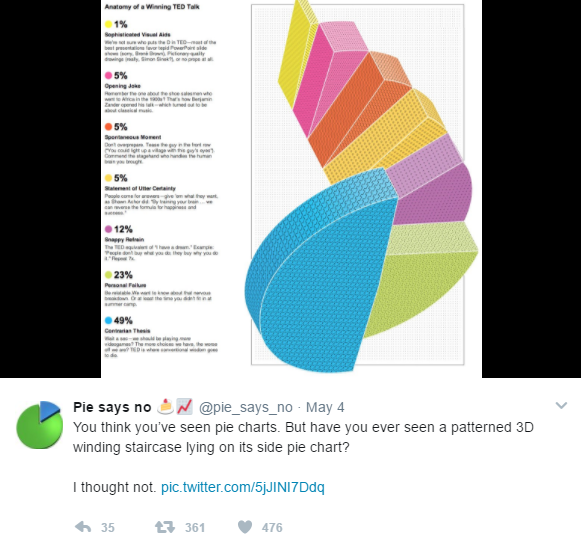
Solving Equations with Fractions
Fawn Nguyen‘s recent post about Solving an Equation with a Fraction has me thinking a lot about how I want to structure my solving equations unit for next year’s Algebra 1 class. I need to focus less on mindlessly manipulating equations and focus more on a conceptual understanding of what equations actually mean.
Number Type Activity from Churchill Maths
Last week, I ran across a new-to-me free resource website from Churchill Maths. The site currently has 10 high-quality PDF resources for free. I tried out the Number Type Cards with both my math concepts class and my trigonometry class. This led to two very different but still awesome classroom experiences.
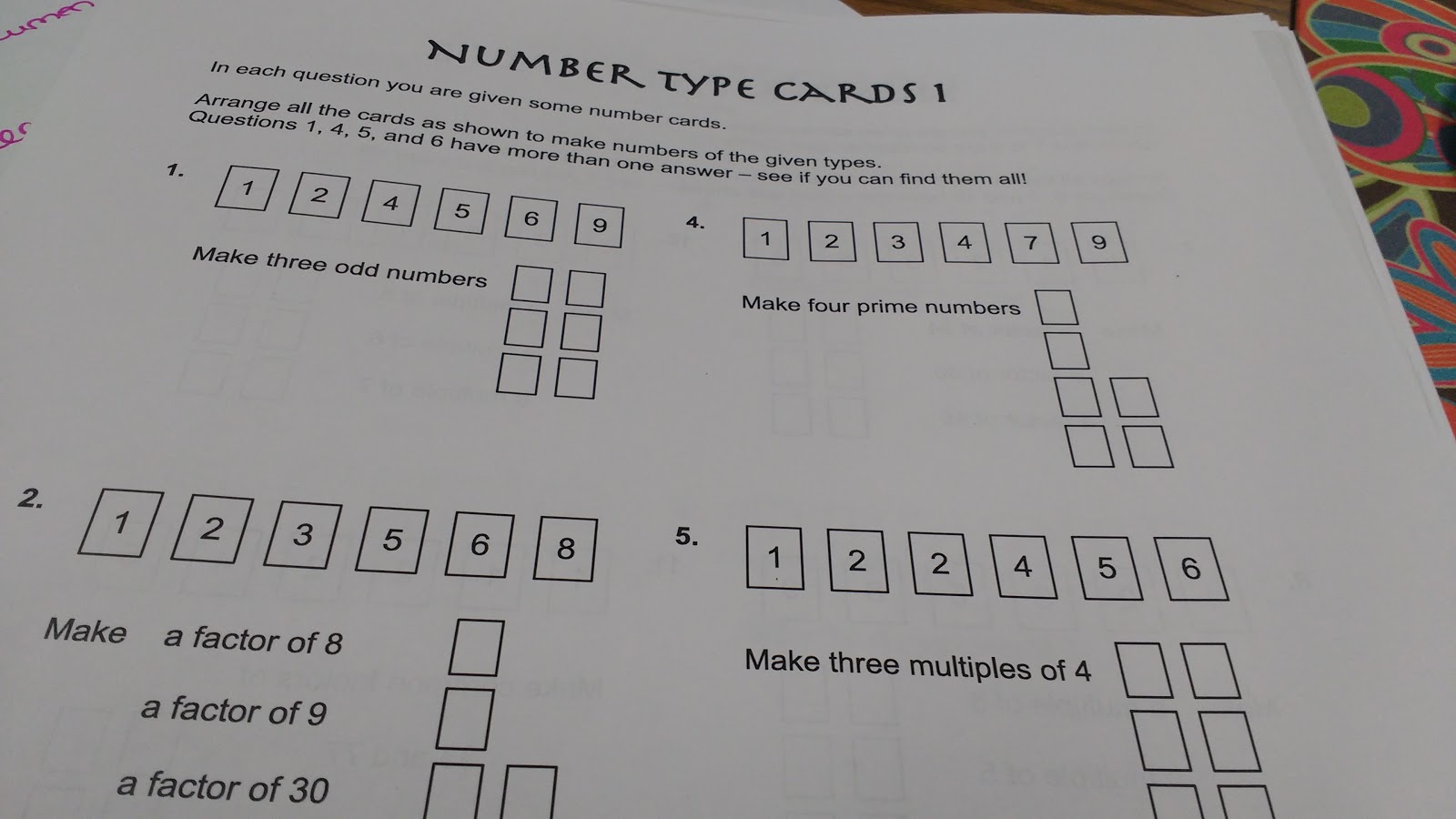
Exponent Rules Splat Activity
Pam Wilson really got my brain turning over with ideas after she posted about extending Steve Wyborney’s Splat idea with exponent rules in her recent #ReadThree post. I think this has so much potential in my Algebra 1 classes.
Using Manipulatives to Introduce Mean (Average)
Debbie Hurtado posted on Twitter about using manipulatives to increase students’ understanding of the mean of a data set. I recently posted about using this idea (sans the manipulatives) for an activity called “Can You Level the Towers?” I look forward to actually having my students build the towers next year!
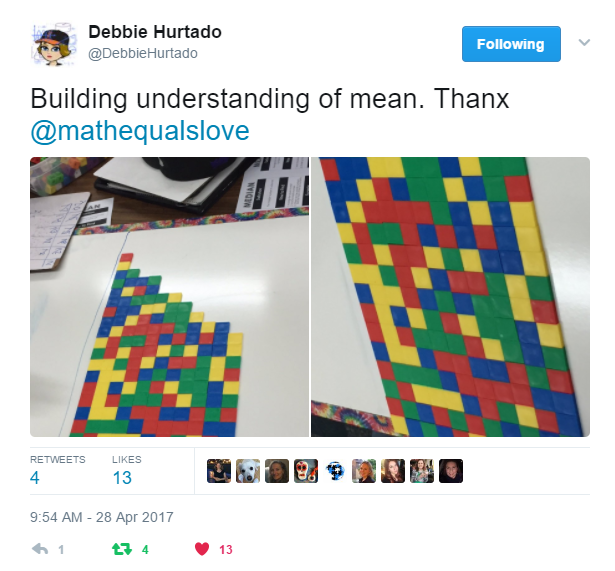
Experimental Probability Activity with Coin Flipping
Megan Lonsdale tweeted a picture of a display she had her students create with data from flipping a coin and finding the experimental probability of the coin landing on heads. I talked with my Algebra 1 students this year how experimental probability approaches theoretical probability as the number of trials is increased, but I love how Megan SHOWED this to her students instead of just telling them. I especially love the use of tape to show where the theoretical probability lies and the use of individual stickers to represent experimental probabilities. Definitely stealing this next year! Want to see the poster in greater detail? Check out this link.

Opposite Hand Olympics
Karl Lippa has me very intrigued with this tweet about having his students participate in Opposite Hand Olympics in Algebra 1. You MUST click through the link above to watch the video of students trying to balance marbles on a textbook. It looks like so much fun! The screenshot I’m posting below just doesn’t capture the awesomeness of the entire video.
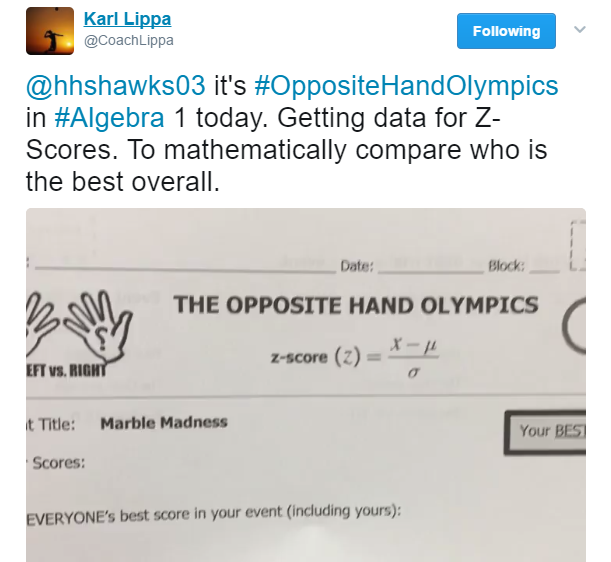
Punch Cards Review Activity
Sarah Newton is continuing to hit it out of the park with awesome #Teach180 tweets! I love this punch card activity that she created for trigonometric equations. I’ve used punch cards once before, and they worked well. I need this reminder to put punch card activities into my normal teaching rotation.
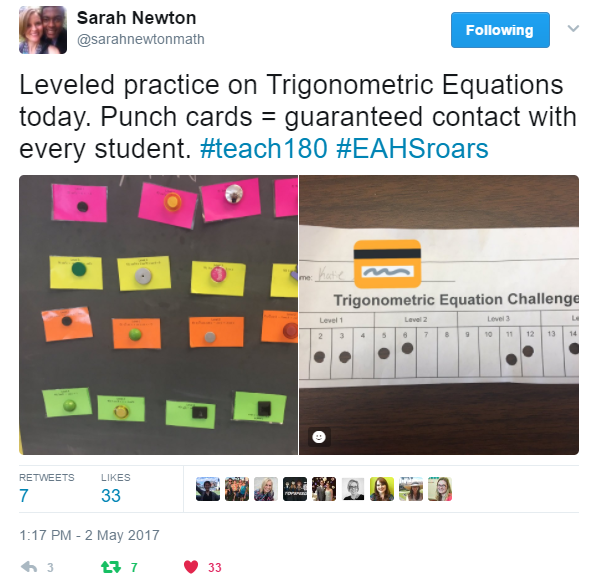
Polynomial Vocabulary Venn Diagram
I also love Sarah Newton‘s use of a Venn Diagram to practice polynomial vocabulary! My Algebra 1 students have been struggling a bit with Venn Diagrams in our probability unit, so I think that incorporating them earlier in the year would be really helpful to them.
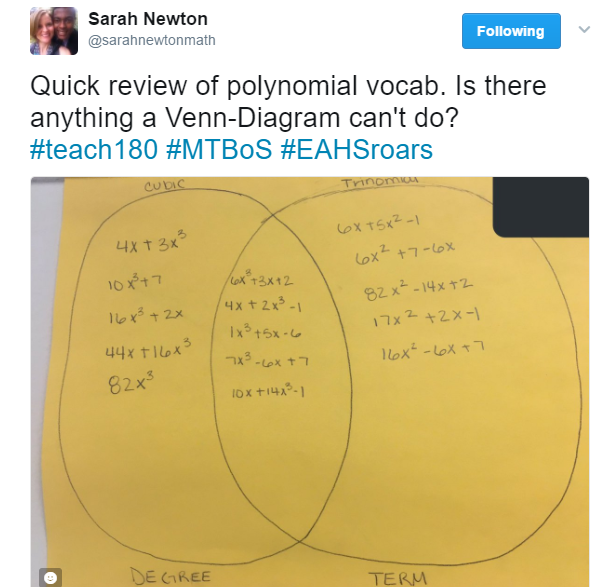
Circumference or Area Activity
I don’t teach geometry, but Kerri Sustich‘s Circumference or Area? activity that she posted on Twitter definitely caught my eye. So often, we practice all of one type of problem then all of another type of problem. This activity gets students thinking about two types of problems at the same time. I can definitely see applying this same practice structure to other math topics!
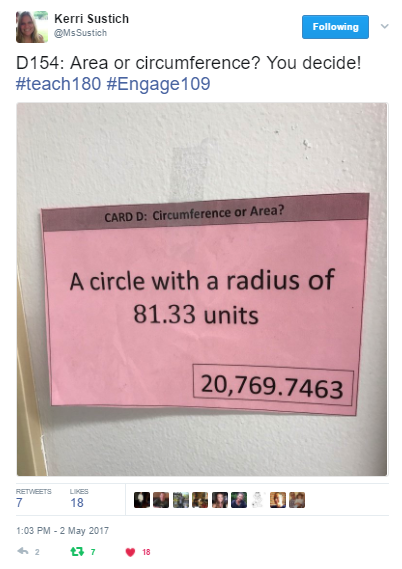
Systems of Equations Dry Erase Templates
Christie Bradshaw posted an awesome dry erase template she made to help her students solve systems by elimination. My students struggled with setting up elimination problems this year, so I look forward to trying a dry erase template for this next year. Thanks for sharing, Christie! She also has a great new post up on her blog with dry erase templates for teaching polynomials using the box method!
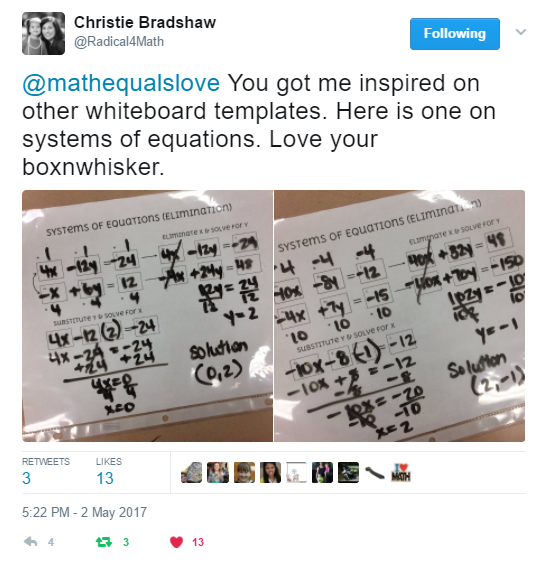
That’s it until next week! Read any “must reads” lately? Share them in the comments!

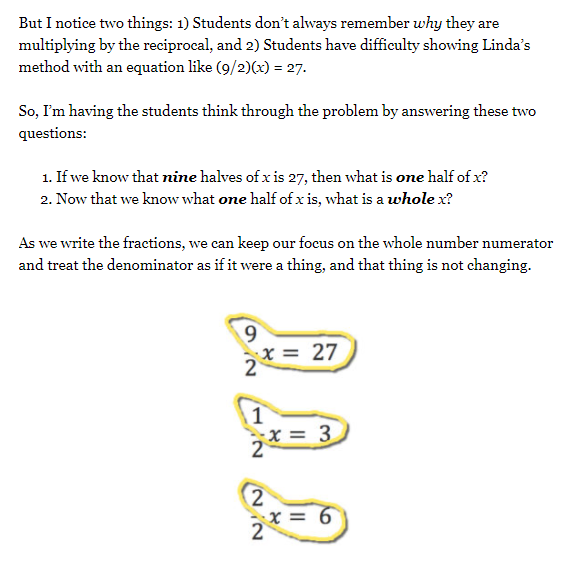


This is awesome! Thanks for the great collection. I hope you keep up the 'Must Reads' format.
Love this idea of yours! Thanks for sharing!